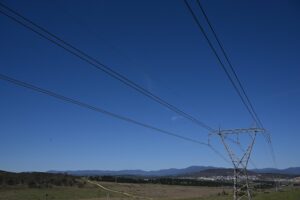Although there has been much talk about the impacts of PV and energy efficiency on energy use and income for utilities (the so-called ‘death spiral’), there has been little in the way of what, exactly, to do about it. In other words: how can we change the way the electricity industry operates so it can transition to the ‘new normal’ as PV and energy efficiency uptake continue to increase?
The Australian PV Association (APVA) has recently completed an ARENA-funded a project which is the first to develop an integrated package of measures that aims to address this problem. The responses by utilities and governments to date have essentially attempted to maintain the status quo, however, ‘disruptive technologies’ such as solar PV, energy efficiency, home energy management systems and storage will likely drive the need for more fundamental changes.
The project involved focus groups and surveys of the general public, interviews with the electricity industry, government agencies and regulators, with all findings presented at a public workshop and through a number of reports which are available on the APVA Website: www.apva.org.au. ARENA and the University of Arizona have funded the collaborative research, with reports published by the CSIRO, the University of Arizona and the APVA.
When disruptive technologies such as PV and energy efficiency are introduced into a well-established industry, they don’t simply integrate seamlessly, but exert change in doing so. Whereas the current electricity system is based on a ‘top down’ structure for consumers who just buy electricity, distributed energy is providing customers with a significant number of alternatives that allows them to actively participate in a system growing from the bottom up. To allow these two approaches to integrate requires a regulatory framework based on equal competition between supply-side and demand-side options at all levels (generation, networks and retail), for both network planning and during the day-to-day operations of the electricity market.
Best practice Integrated Resource Planning (IRP) provides a process that helps DE options to be treated equally with network augmentation. It should become an integral component of network planning so that DE options can be used to decrease network expenditure. The proposed Regulatory Investment Test Distribution (RIT-D) is an embryonic form of IRP, with significant scope for improvement. For example, currently the RIT-D does not need to be applied where the project is related only to the refurbishment or replacement of existing assets. There also appears to be no process to encourage the effectiveness of non-network solutions to be tested in advance. The RIT-D process also includes only economic impacts, excluding any potential social and environmental benefits.
The market arrangements required to then drive uptake of distributed energy on a day-to-day basis can be divided into the following three types:
-
Those related to the operation of the incumbents
The two most critical are decoupling network operators’ revenue from their sales through the use of a revenue cap, which reduces their opposition to distributed energy options; and mechanisms that allow network operators to participate in the distributed energy market because they are often best placed to know what needs to be done to provide network support.
-
Those related to the design and operation of the distributed energy market itself
For example, consumers should be able to source their electricity from, and sell their electricity to, entities other than their retailer; and solar access rights should be formalised.
-
Those that then stimulate the broader distributed energy market and enhance the interaction and operation of all participants
For example information and training, minimum energy performance standards, house energy rating schemes, and feed-in tariffs and white certificate schemes.
To date, most effort has been on the third type of market arrangement, and as a result has been insufficient to effectively integrate distributed energy. Once distributed energy has been used to reduce network expenditure, a proportion of network costs could be paid through a fixed daily charge based on a customer’s monthly demand peak. In this way, each customer’s contribution to network costs would be related more directly to their impact, which will be fairer for all. This contrasts with current suggestions to levy extra charges on PV customers, yet allowing others to increase their demand substantially with no additional cost. The fixed and variable tariff components should be designed to ensure that the various distributed energy options are supported through their ability to reduce both energy use and peaks in demand.
A fully competitive distributed energy market will need to develop over time, however, the required institutional and organisational changes need to begin now and will need to accommodate both the incumbents and new entrants, on an ongoing basis. Distributed energy technology is developing very rapidly and electricity utilities are likely to be left with stranded assets if regulatory processes are too slow to adjust.








